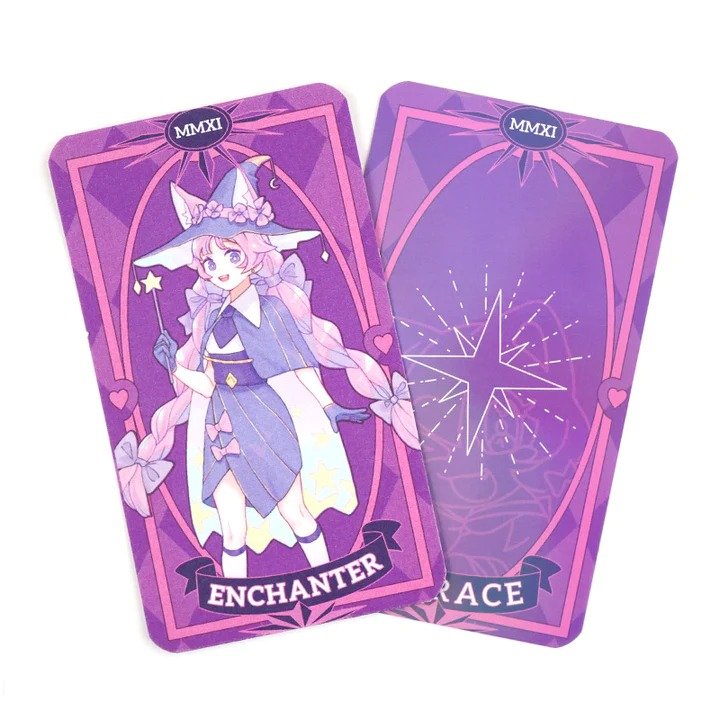How to Make a Printable Game Card: A Step-by-Step Guide
If you are a fan of card games, you might have wondered how to make your own printable game card.
Whether you want to create a unique deck of playing cards, design a card game that you invented, or make an expansion for your favorite game, making your own game card is a fun and rewarding project.
In this article, we will show you how to make a printable game card in a few simple steps.
You will learn about the best tools, tips, and tricks to create your own custom game cards that look professional and impressive.
Step 1: Choose Your Card Size and Shape
The first thing you need to do is decide on the size and shape of your game card. There are many standard card sizes available, such as
- poker size (2.5 x 3.5 inches),
- bridge size (2.25 x 3.5 inches),
- tarot size (2.75 x 4.75 inches),
- mini size (1.75 x 2.5 inches), and
- Square size (2.5 x 2.5 inches).
You can also choose a custom size that suits your needs.
The shape of your card can be either rectangular or round.
Rectangular cards are more common and easier to print and cut, but round cards can add some novelty and flair to your game.
You can also choose to have rounded corners or sharp corners on your rectangular cards.
Step 2: Design Your Card Fronts and Backs
The next step is to design the fronts and backs of your game cards. You can use any software that allows you to create images, such as
- Adobe Photoshop,
- Illustrator,
- Gimp, or
- Canva.
You can also use online platforms that specialize in custom game cards, such as MakePlayingCards, BoardGamesMaker, or TheGameCrafter.
These platforms have templates, fonts, icons, and other elements that you can use to create your card designs.
When designing your card fronts and backs, you should consider the following aspects:
Theme
Your card design should match the theme of your game. For example, if you are making a fantasy game, you might want to use medieval fonts, magical symbols, and colorful illustrations.
Layout
Your card design should have a clear and consistent layout that shows the information and features of your card.
For example, if you are making a trading card game, you might want to include the name, type, cost, power, and abilities of your card.
Color
Your card design should have a harmonious and attractive color scheme that enhances the mood and aesthetics of your game.
For example, if you are making a horror game, you might want to use dark and gloomy colors.

Images
Your card design should have high-quality and relevant images that illustrate the theme and content of your card.
For example, if you are making a trivia game, you might want to use photos or icons that represent the topics or categories of your questions.
Text
Your card design should have legible and concise text that conveys the information and instructions of your card.
For example, if you are making a word game, you might want to use large and bold fonts that show the letters or words of your card.
Step 3: Print Your Game Cards
The third step is to print your game cards on suitable material.
You can either print them at home using your own printer or outsource them to a professional printing service.
If you print them at home, you will need:
- A printer that can print high-resolution images in color
- A sturdy cardstock paper that can withstand shuffling and handling
- A paper cutter or scissors that can cut straight and precise lines
- A laminator or clear tape that can protect your cards from wear and tear
If you outsource them to a professional printing service, you will need:
- A digital file of your card designs in PDF or JPG format
- A specification of your card size, shape, quantity, material, and finishing
- A budget and timeline for your printing order
Some of the benefits of outsourcing your printing are:
- You can choose from a variety of materials and finishes that suit your preferences and needs
- You can ensure the quality and durability of your cards
- You can save time and effort on printing and cutting
Some of the drawbacks of outsourcing your printing are:
- You might have to pay more for shipping and handling fees
- You might have to wait longer for your order to be delivered
- You might have less control over the final outcome of your cards
Step 4: Enjoy Your Game Cards
The final step is to enjoy your game cards with your friends and family. You can use them to play your own game or to enhance an existing game.
Also, you can share them with other game enthusiasts online or offline. You can even sell them or give them away as gifts.
Making your own printable game card is a creative and rewarding hobby that can bring you hours of fun and satisfaction.
By following these steps, you can create your own custom game cards that reflect your personality and style. So what are you waiting for? Start making your game cards today and unleash your imagination!


